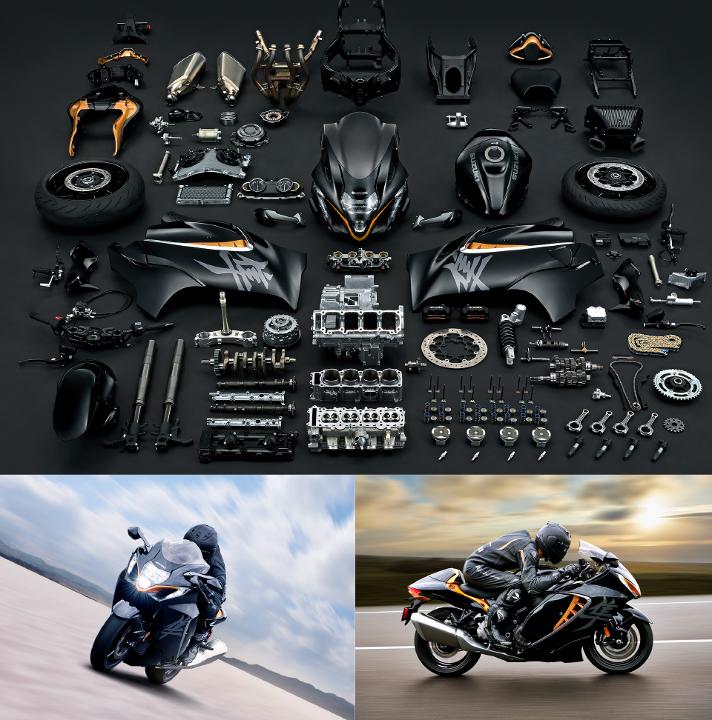Legendary power and reliability
Refinements implemented throughout the
Hayabusa's legendary 1,340cm³ liquid-cooled inline-four engine achieve
an even better balance of overall performance, yet greater efficiency
and durability, while also satisfying Euro 5 emissions standards.
Inheriting the proud legacy of the Ultimate Sport Bike that established
the category in 1999, the Hayabusa continues to deliver more torque and
power than any other sport bike at the engine speeds typically used in
daily riding. A symbol of engineering pride and prowess, it is built to
deliver the ultimate riding experience for the long run.

1,340cm³ liquid-cooled inline-four engine
Optimum power, durability and control
Though the engine is already renowned
for its to improve durability and longevity, the following refinements
aim to take it to another level. New pistons and connecting rods reduce
the weight of moving parts within the engine. Changes to the crankshaft
oil passages improve engine lubrication. The transmission shaft needle
bearings are extended in length. Attention to detail goes as far as
changing the way the engine case bolts are tightened, and even to the
threading for the screw holes in the upper crankcase.
The new pistons and Twin Swirl Combustion Chamber (TSCC) design fully leverage advances in CAE analysis to bring in more air as the valves begin to lift and thereby increase combustion efficiency. Suzuki Side Feed Injectors (S-SFI) feature a new dual injector design that positions the secondary injector so its spray strikes a reflecting plate in the funnel and enters the combustion chamber as a fine mist. This combines with the increased capacity of a new air cleaner and longer intake pipe design to optimize low- to mid-range power output and make the Hayabusa more controllable in typical daily riding situations.
Suzuki's ride-by-wire throttle control system provides natural response with linear control, while a related change to a 43mm bore size for the throttle bodies boosts low- and mid-range power output. Also helping to improve performance and controllability at the most commonly used low- to mid-range speeds are the new engine's reduced valve lift overlap and a new pipe on the exhaust header connecting cylinders #1 and #4.
The new pistons and Twin Swirl Combustion Chamber (TSCC) design fully leverage advances in CAE analysis to bring in more air as the valves begin to lift and thereby increase combustion efficiency. Suzuki Side Feed Injectors (S-SFI) feature a new dual injector design that positions the secondary injector so its spray strikes a reflecting plate in the funnel and enters the combustion chamber as a fine mist. This combines with the increased capacity of a new air cleaner and longer intake pipe design to optimize low- to mid-range power output and make the Hayabusa more controllable in typical daily riding situations.
Suzuki's ride-by-wire throttle control system provides natural response with linear control, while a related change to a 43mm bore size for the throttle bodies boosts low- and mid-range power output. Also helping to improve performance and controllability at the most commonly used low- to mid-range speeds are the new engine's reduced valve lift overlap and a new pipe on the exhaust header connecting cylinders #1 and #4.

